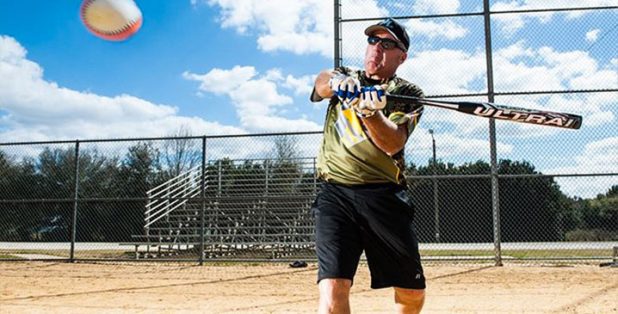Baseball is good for the soul, as any avid fan will tell you, but it can be hard on the joints. Non-professional adult baseball and softball leagues are gaining in popularity across the country as a fun way for adults to stay active. However, many could begin suffering from lingering joint pain, especially if they are a former baseball player or other type of athlete. Throwing injuries, especially of the shoulder, wrist, and elbow, are often experienced by baseball players, frequently caused by overuse. Upper extremity problems include tendonitis, inflammation of muscles, wrist and other sprains, cartilage and labral tears, and rotator cuff injuries. Knee injuries, which can happen during base running, are another potential hazard.
When symptoms become bothersome, it may be time to visit an orthopedist, who will take a medical history and do a physical exam to check range of motion, strength and joint stability. Imaging tests like x-rays, MRIs, or ultrasounds may be ordered to better understand the problem. With all this information in hand, the physician will then recommend a course of treatment.
A conservative approach might include taking a break from baseball, icing the complaining joint, and using non-steroidal anti-inflammatory drugs (NSAIDs) like ibuprofen. Your doctor may also recommend physical therapy, which can improve range of motion and strengthen the muscles that support the joint. If rest, NSAIDs and physical therapy don’t do the trick, the next line of attack might be a cortisone injection which can suppress inflammation and calm surrounding nerves, and can reduce pain.
When these treatments fail to relieve your symptoms, your physician may refer you to an orthopedic surgeon. The type of surgery will depend on several things, including your injury, age, general health and anatomy. There is a wide range of solutions —like anchors and sutures — that can help address problems like rotator cuff injuries and shoulder instability. For joints that are severely compromised with glenohumeral osteoarthritis (OA) a shoulder replacement may be the solution. For instance, the OVOMotion with Inlay Glenoid Total Shoulder System is designed to precisely fit each patient’s natural anatomy. It mimics the native shape of a healthy joint and preserves the patient’s bone and joint structure, allowing them to remain active.
You can read about two patients who were able to return to their favorite sport after successful surgeries with Anika wrist and shoulder implants. Read here about Jerry, a competitive softball player who found success with the WristMotion Hemiarthroplasty implant. And read here about Larry, another competitive softball player who returned to play thanks to the OVO® Total Shoulder Implant.
Remember, while not every baseball injury can be prevented, pre-season conditioning and a thorough warmup before every game is always recommended. A healthcare professional can offer exercises tailored for your body and there are also plenty of warmup routines available online as well. Here’s one we like.
So have fun and play ball!
If joint pain is keeping you off the baseball diamond and you’d like to discuss treatment options, use our Find a Doctor tool to locate an expert in your area.




